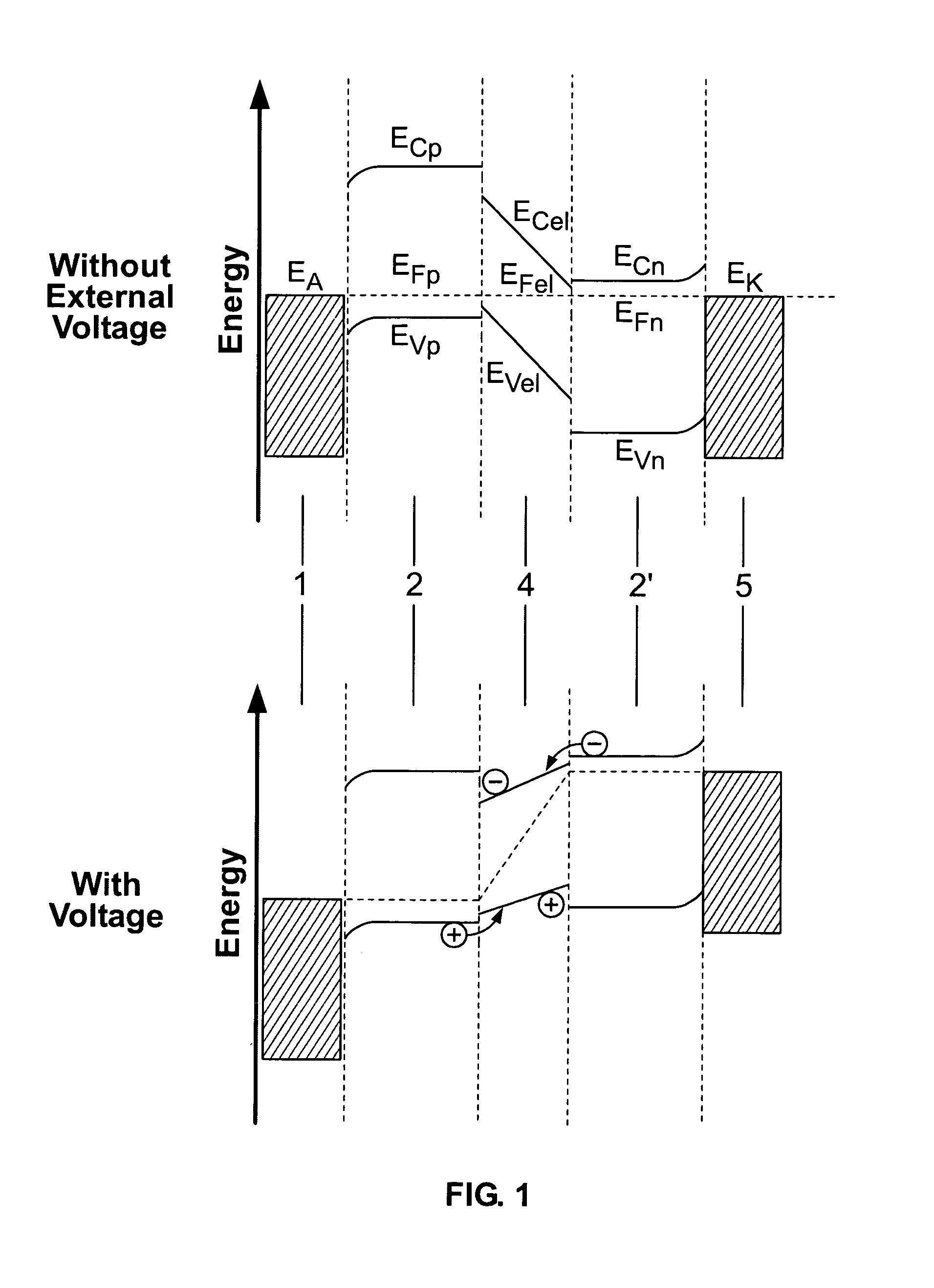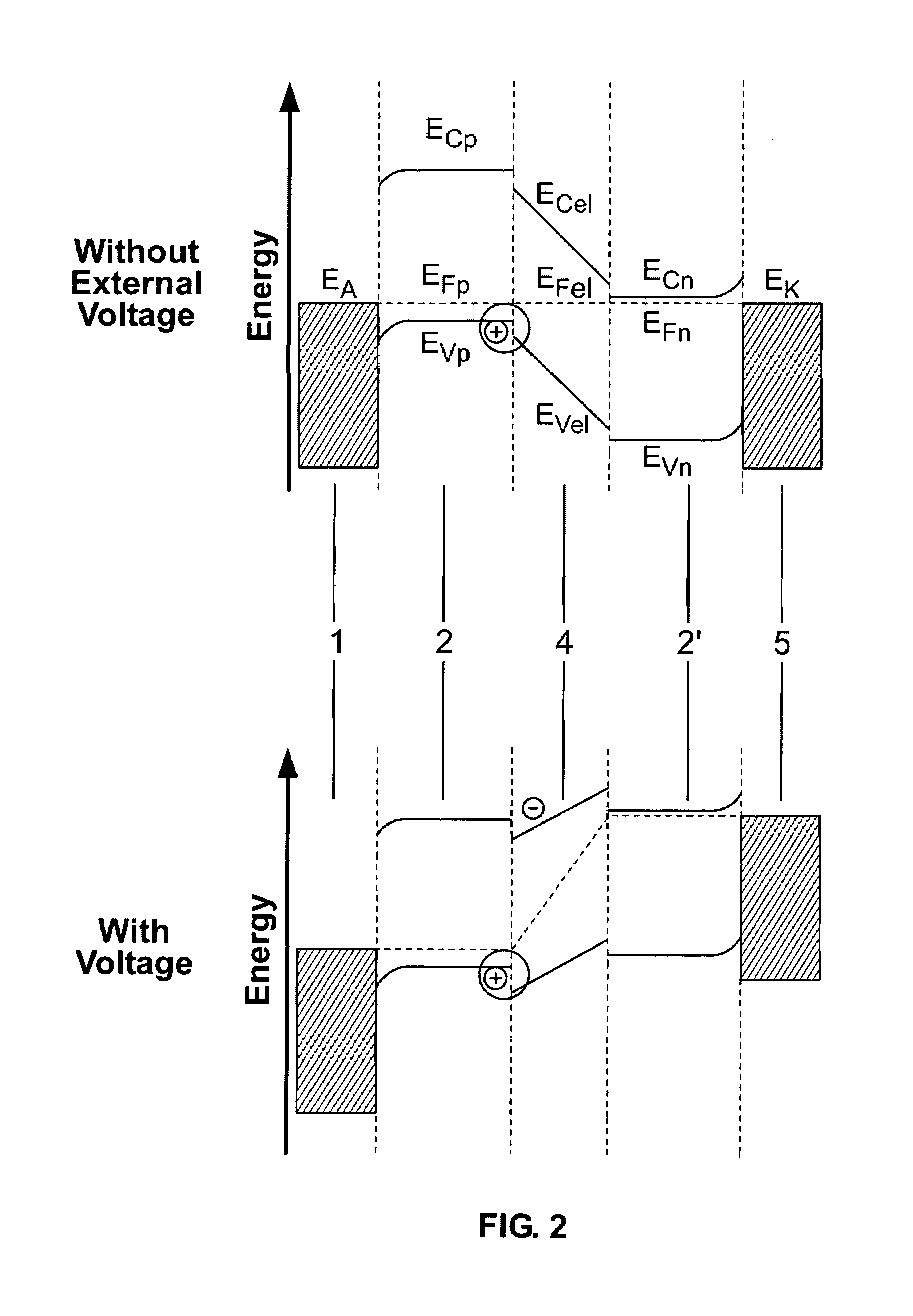Light emitting component comprising organic layers
a technology of light emitting components and organic layers, which is applied in the direction of discharge tubes luminescnet screens, instruments, natural mineral layered products, etc., can solve the problems of poor conductivity and mobility of charge-carrier transport layers, failure to advance this approach, and low transparency, so as to achieve greater homo distance between transport layers and emitters. , the effect of ionization potential
- Summary
- Abstract
- Description
- Claims
- Application Information
AI Technical Summary
Benefits of technology
Problems solved by technology
Method used
Image
Examples
Embodiment Construction
[0066]A theoretically ideal structure is represented in FIG. 1, comprising an anode (EA), a highly p-doped hole-injection and transport layer (EVp, ECp, EFp), an electroluminescent layer (EVel, ECel, EFel), a highly n-doped electron-injecting and transporting layer (EVn, ECn, EFn), and a cathode. When voltage is applied (anode polarized positively), holes from the anode and electrons from the cathode are injected in the direction of the light-emitting layer. Since no barrier occurs (EVp>EVel) either for holes at the interface of the p-doped layer to the light-emitting layer, or for electrons at the interface of the n-doped layer to the light-emitting layer (ECn>ECel), and a high barrier exists (ECelCp and EVel>EVp) at the interface of the light-emitting layer to the p-doped and n-doped layer for electrons and holes respectively, the charge carriers (electrons and holes) collect in the light-emitting layer, where they can efficiently form excitons and recombine radiantly. In reality,...
PUM
| Property | Measurement | Unit |
|---|---|---|
| thickness | aaaaa | aaaaa |
| thicknesses | aaaaa | aaaaa |
| luminescence | aaaaa | aaaaa |
Abstract
Description
Claims
Application Information
 Login to View More
Login to View More - R&D
- Intellectual Property
- Life Sciences
- Materials
- Tech Scout
- Unparalleled Data Quality
- Higher Quality Content
- 60% Fewer Hallucinations
Browse by: Latest US Patents, China's latest patents, Technical Efficacy Thesaurus, Application Domain, Technology Topic, Popular Technical Reports.
© 2025 PatSnap. All rights reserved.Legal|Privacy policy|Modern Slavery Act Transparency Statement|Sitemap|About US| Contact US: help@patsnap.com



